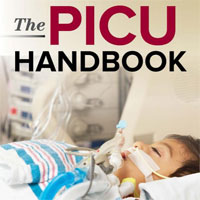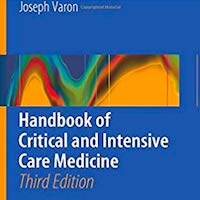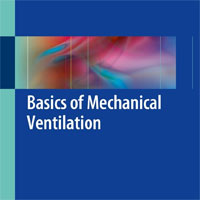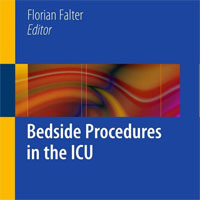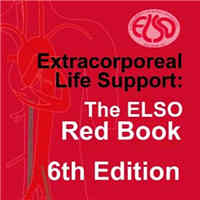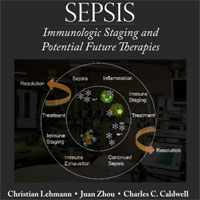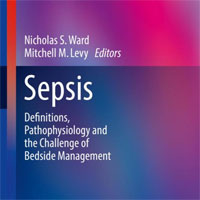Tag: sedation
Weaning Sedation in Pediatric Intensive Care
The use of sedation and analgesia to provide comfort, safety, and pain treatment are central principles in the care of critically ill children. Most critically ill children are at risk of experiencing pain and discomfort... read more
Ketamine May Reduce Opioid Requirements Following Cardiac Surgery
Ketamine may be a reasonable choice for postoperative cardiac surgery analgesia and may reduce the need for opioids on discharge, and possibly during admission. This study is a single center, retrospective, observational,... read more
Intranasal Dexmedetomidine vs. Inhaled Nitrous Oxide for Pediatric Procedural Sedation and Analgesia
The results of this clinical trial support that IN DEX is not inferior to 50% nitrous oxide in providing analgesia for a painful procedure among children 3–15 years of age. Furthermore, IN DEX can be considered as an alternative... read more
Severe ICU-Acquired Hypernatremia: Prevalence, Risk Factors, Trajectory, Management, and Outcome
Severe hypernatremia occurred in the setting of inability to drink, near-absent measurement of urinary free water losses, diuretic therapy, fever, renal impairment, and near-absent or limited or delayed water administration.... read more
Awake, Walking, and Intubated – The ICU Breakthrough Giving Patients Their Lives Back
If they knew what it's like for patients surviving after the ICU, that sedation isn't sleep, and that they're being so traumatized and damaged by these normal practices, they would change this. Picture this: it's your... read more
Early Deep-to-light vs. Continuous Light Sedation for ICU Patients with Mechanical Ventilation
Compared to the continuous light sedation, early deep-to-light sedation strategy was associated with improved patient outcomes, and continuous deep sedation was confirmed with poorer patient outcomes. In total, 6700 patients... read more
Reducing Deep Sedation and Benzodiazepine Use in Mechanically Ventilated Patients During Critical Care Transport
The rate of deep sedation in this cohort was consistent with previously published data; however, it remains higher than clinically indicated. Over the course of the QI project, the proportion of deeply sedated patients... read more
Early Reapplication of Prone Position During VV-ECMO for ARDS
A combination of prone positioning (PP) and venovenous extracorporeal membrane oxygenation (VV-ECMO) is safe, feasible, and associated with potentially improved survival for severe acute respiratory distress syndrome (ARDS).... read more
How to end quiet suffering in the ICU? Identifying and treating hypoactive delirium
The duration of time a person spends in hypoactive delirium predicts higher rates of death, longer length of stay, higher costs of care, and higher rates of acquired dementia in the months and years following critical illness.... read more
Ketamine for Treatment-Resistant Depression
This book brings together an international group of clinicians and researchers from a broad swath of inter-related disciplines to offer the most up-to-date information about clinical and preclinical research into ketamine... read more
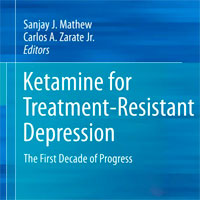
Impact of a Rounding Checklist Implementation in the Trauma ICU on Clinical Outcomes
We aimed to evaluate the effectiveness of an intensive care unit (ICU) round checklist, FAST HUGS BID (Feeding, Analgesia, Sedation, Thromboembolic prophylaxis, Head-of-bed elevation, Ulcer prophylaxis, Glycemic control,... read more
EEG Patterns for Predicting Poor Outcome After Cardiac Arrest
The specificity of the ERC-ESICM-recommended EEG patterns for predicting poor outcome after cardiac arrest exceeds 90% but is lower than in previous studies, suggesting that large-scale implementation may reduce their accuracy.... read more
Ineffective Airway Clearance Nursing Diagnosis & Care Plans
Ineffective airway clearance is the inability to clear secretions or obstructions from the respiratory tract. This can be detrimental to breathing and create complications. Secretions can be problematic as a result of... read more
Scheduled Intravenous Opioids
Maintaining comfort and analgesia is fundamental to providing adequate care in intensive care unit (ICU) patients. Pain assessment and its control remain the highest priorities and concerns among survivors of critical illness... read more
Propofol-Related Infusion Syndrome in a Child with RSE
Propofol is used for sedation, anxiolysis, anesthesia induction, and as an anticonvulsant. In cases of refractory status epilepticus (RSE), propofol is more efficient than barbiturates. We present a case of a 3-year-old... read more
Haloperidol Efficacy to Decrease Delirium Burden in Critically Ill Patients
This trial, that was stopped early, did not show evidence that haloperidol reduces delirium and coma in critically ill patients with delirium. The beneficial effects on some agitation-related outcomes and lower sedative... read more
Delirium Treatment with Haloperidol Not Associated with Higher Risk of QTc-interval Prolongation
Delirium treatment with haloperidol and/or pipamperone was not associated with a higher risk of QTc-interval prolongation in this naturalistic patient sample but was greater in magnitude and correlated with equipotent dosage... read more
Haloperidol and Delirium: What is Next?
Haloperidol is, by far, the best-studied antipsychotic in ICU, appears to be safe in the dosing range used in these two trials and is easy to administer and titrate. For these reasons, if a clinician chooses to pharmacologically... read more
Nasotracheal vs. Orotracheal Intubation for Sedation in Critically Ill Patients
Nasotracheal intubation (NTI) may be used for long term ventilation in critically ill patients. Although tracheostomy is often favored, NTI may exhibit potential benefits. Compared to orotracheal intubation (OTI), patients... read more
Safety and efficacy of dexmedetomidine vs ketamine vs midazolam combined with propofol in gastrointestinal endoscopy for cancer patients
In cancer patients who underwent GI endoscopy, dexmedetomidine-propofol and ketamine-propofol had better sedation efficacy [lower achievement time of RSS 3–4, total propofol dose, and eye-opening time] compared to midazolam-propofol... read more
Propofol in ICU Settings: Understanding and Managing Anti-Arrhythmic, Pro-Arrhythmic Effects, and Propofol Infusion Syndrome
Propofol has revolutionized anesthesia and intensive care medicine owing to its favorable pharmacokinetic characteristics, fast onset, and short duration of action. This drug has been shown to be remarkably effective in numerous... read more
Dexmedetomidine for EOL Sedation
This study demonstrates a reduction in breakthrough medication requirements, particularly benzodiazepines, for patients sedated with dexmedetomidine at end of life (EOL). The dexmedetomidine cohort required less breakthrough... read more


